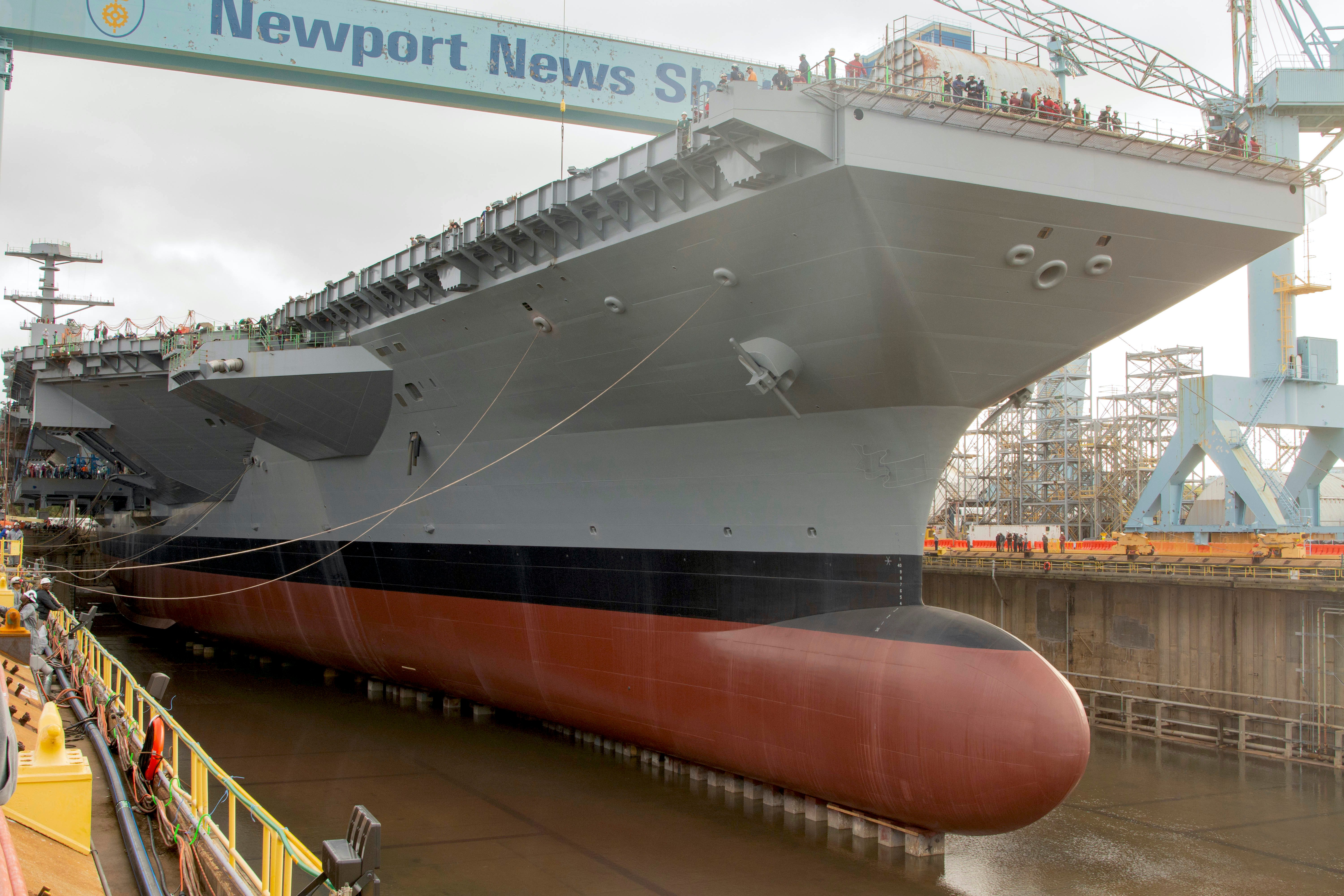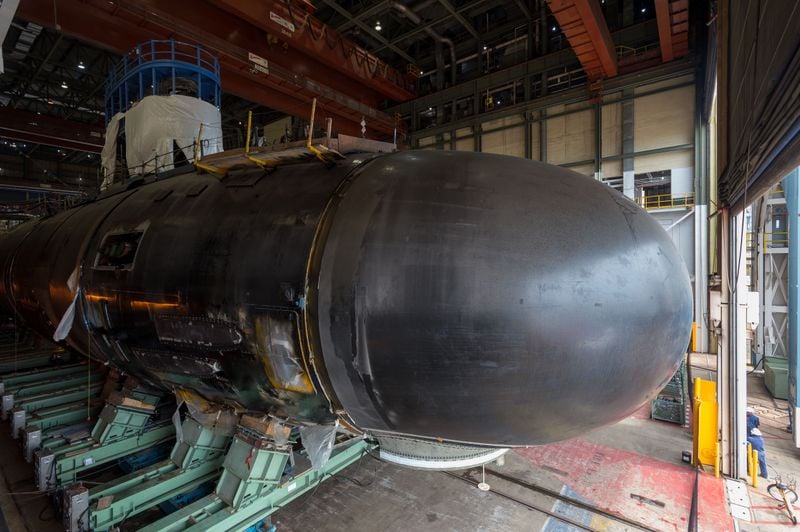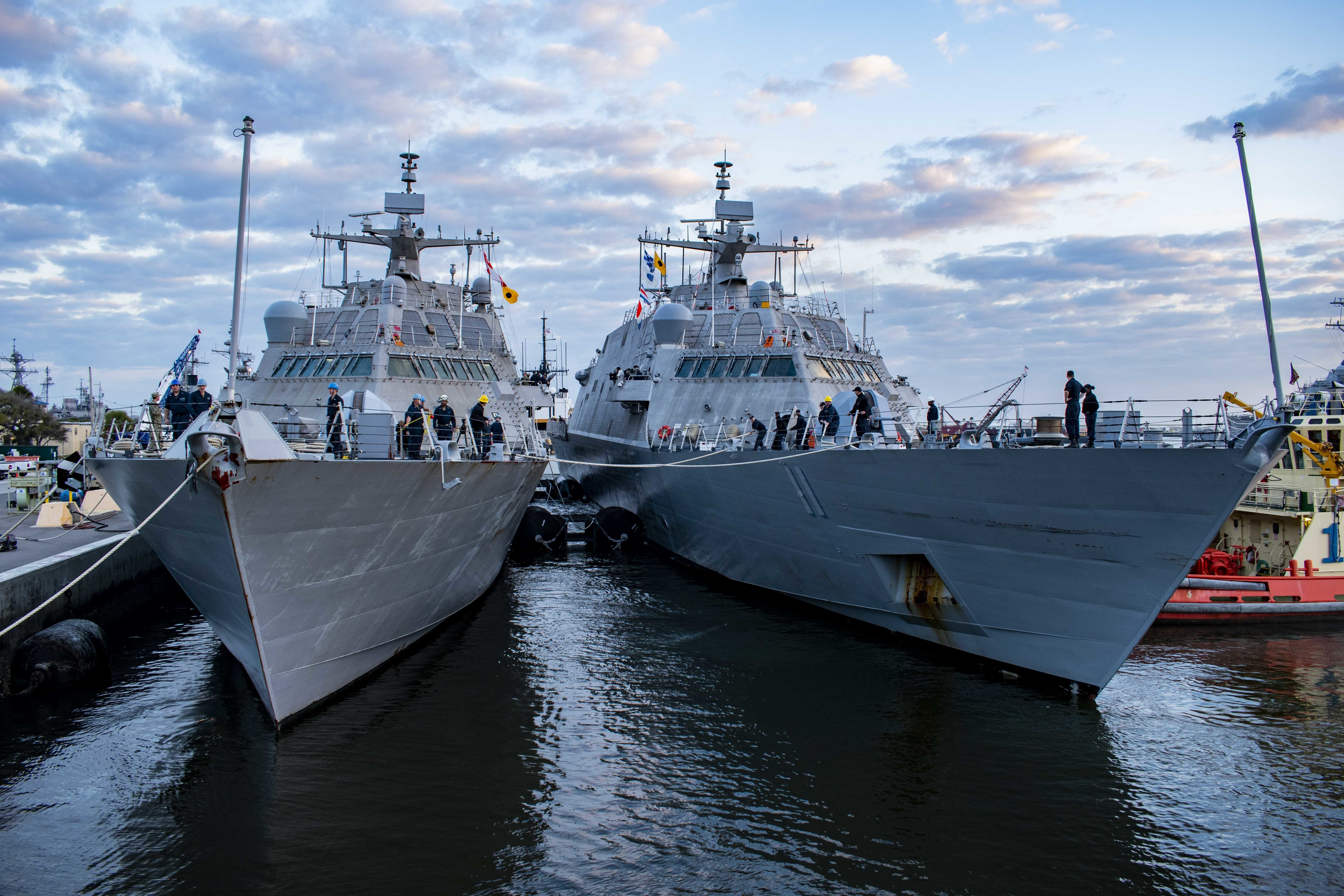
THE PENTAGON – The Navy’s Fiscal Year 2021 budget lays out a shipbuilding plan that would be the smallest in six years and does not begin to move the sea service towards a 355-ship fleet that relies more on smaller ships, according to budget documents.
The request includes just $19.9 billion for eight ships, which falls about $4 billion and four ships short of the FY 2020 ship procurement. The last time lawmakers approved a shipbuilding plan of only eight ships was FY 2015, when sequestration spending caps loomed over the budgeting process.
The budget request would also retire the first four Littoral Combat Ships, a Whidbey Island-class dock landing ship (LSD-41/49) and an ocean tug to free up funds for more personnel and the development of new weapons systems.
Acting Secretary of the Navy Thomas Modly had previously told USNI News that the FY 2021 wouldn’t begin investing in new classes of ships such as small amphibious ships and new logistics ships that could be the cornerstone of a planned spike in the ship count over the next nine years. That is in large part because the Integrated Naval Force Structure Assessment is still in its final stages and has not been briefed to Pentagon leadership and released yet, meaning it did not inform the FY 2021 budget. The FY 2021 budget documents, which also show expected investments over the course of the five-year Future Years Defense Program (FYDP), indicate the Navy will only buy seven ships in 2022, though that figure could be supplemented by these new ship classes.
Even with those expectations set, the FY 2021 request still makes some inconsistent investments given the stated direction of the service. Bloomberg reported, after a back-and-forth negotiation between the Navy and the Office of the Secretary of Defense over the budget request, the Pentagon ultimately swapped an attack submarine for an Arleigh Burke-class destroyer. The trade runs counter to the priorities the Navy and DoD have stated for the future fleet. The Navy and Pentagon have called for more submarines to counter Russia and China, as well as a surface fleet that will rely less on large surface combatants like the Arleigh Burke-class DDGs and instead delegate more tasks to smaller combatants like a future frigate or “lightly manned” vessels that can be fielded in greater numbers and can be distributed more widely across a theater. The budget request slows the next-generation future frigate program (FFG(X)) to one hull instead of the planned two, slowing the growth of the small combatant fleet when investments in small combatants should be increasing, according to previous plans and strategies.

Ultimately, the shipbuilding budget cuts a Virginia-class submarine, a guided-missile frigate and a fleet oiler while adding an additional T-ATS towing and salvage ship compared to last year’s expectations of FY 2021 shipbuilding.
Rep. Joe Courtney, the chairman of the House Armed Services seapower and projection forces subcommittee, called the plan “dead on arrival.”
“This weak, pathetic request for eight ships – of which two are tugboats – is not only fewer ships than 2020, but fewer ships than the Navy told us last year it planned for 2021. At $19.9 billion, this request is nearly 17 percent lower than current funding levels and truthfully proposes just six combatant vessels – the lowest level in a decade. It’s impossible to square this plan with the Administration’s National Defense Strategy and its claim that it supports a 355-ship fleet.”
Courtney noted that he considered just six of the eight ships in the plan to be true combatant warships, making this the smallest warship buy since 2010, according to his staff’s research.
The overall FY 2021 budget request includes $207.1 billion for Navy and Marine Corps spending, as part of a total $705.4 billion Defense Department plan. This is $7.2 billion less than DoD spending in FY 2020, or down 1 percent. Department of Navy spending dipped about 1.4 percent compared to FY 2020.
The Navy framed 2017 and 2018 spending as focused on “readiness and recovery,” 2019 and 2020 spending as “modernization and lethality” efforts, and this 2021 request as supporting “all domain dominance,” according to Navy budget briefing documents.
To support that notion, the request “prioritizes nuclear deterrence recapitalization to ensure on time delivery of Columbia” ballistic missile submarine, the first of which is bought in this budget, compared to advance procurement funds included in previous budget years; “continues to strengthen military readiness delivering a force ready now and in the future;” and “delivers a more lethal force through investments in modernization and advanced critical technologies.”
Among the new technologies supported by this budget request are unmanned surface, air and undersea vehicles; hypersonic strike weapons, including a conventional prompt strike weapon and the Standard Missile-6 Block 1B; artificial intelligence and additive manufacturing capabilities; and offensive and defensive cyber capabilities.
To free up funds for these new investments, the two naval services are taking somewhat different approaches.

The Marine Corps will decrease the size of its force, with plans to move from 186,400 Marines to 184,100 in FY 2021. The service also called for a “reduction of USMC systems and programs no longer supporting future modernization: air defense radar, mine-resistant ambush protected vehicle, amphibious assault vehicles” to make way for new technologies and vehicles that do support the integrated naval operations the Marine Corps intends to focus on.
“Future naval force development and employment will include new capabilities that will ensure that the Navy-Marine Corps Team cannot be excluded from any region in advancing or protecting our national interests or those of our allies. Marines will focus on exploiting positional advantage and defending key maritime terrain that enables persistent sea control and denial operations forward,” reads a quote from Commandant Gen. David Berger in the budget briefing document.
On the Navy side, the service wants to plus up its manning to “align manpower to force structure increases”. The surface force is in the midst of a buildup of LCS crews, is increasing the size of each destroyer crew and is vowing to not deploy ships that are not fully manned to a 92 percent fit and 95 percent fill level that ensures the crew has enough sailors with the right expertise to be successful at sea. The Navy hopes to grow to 347,800 uniformed personnel in FY 2021, compared to the 343,300 that the FY 2020 budget predicted for FY 2021.
To free up money for the increased manning and for the modernization efforts, the service will retire six ships early, delay buying two ships and seven aircraft that were previously expected to be bought in FY 2021, and reduce infrastructure spending by 28 percent.

The budget also seeks to continue upward trends on aircraft and surface ship maintenance efficiency and on-time delivery. It requests $11.2 billion for ship depot maintenance, compared to the $11 billion Congress gave the Navy this current year. It requests $1.7 billion for aircraft depot maintenance compared to the $1.4 billion given this year.
The Navy requested more dollars for training and operations. The budget request supports 58 days of operations per quarter for deployed ships and 24 days per quarter for non-deployed ships – the same underway rates as requested for this current year – through a $5.8-billion ship operations budget that’s slightly larger than the $5.5 billion Congress gave this year. For aviation operations – for which the Navy found itself short at the end of FY 2019 and had to significantly curtain nondeployed units’ flying hours – the Navy requested $9 billion compared to the $8.5 billion given this year.
However, these dollars will have to support a larger fleet. The ship fleet sits at 294 today and should hit 297 by the end of FY 2020, and is expected to hit 306 by the end of FY 2021.





